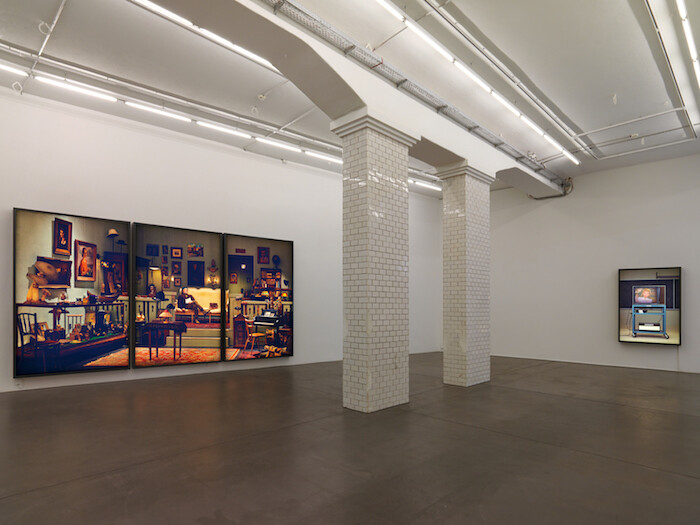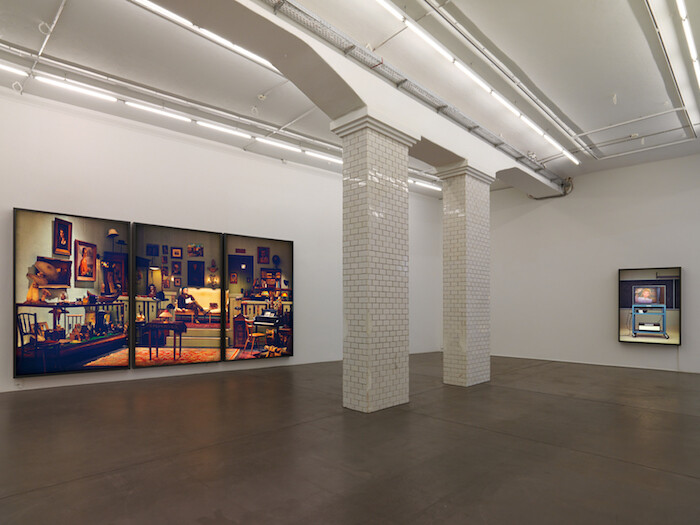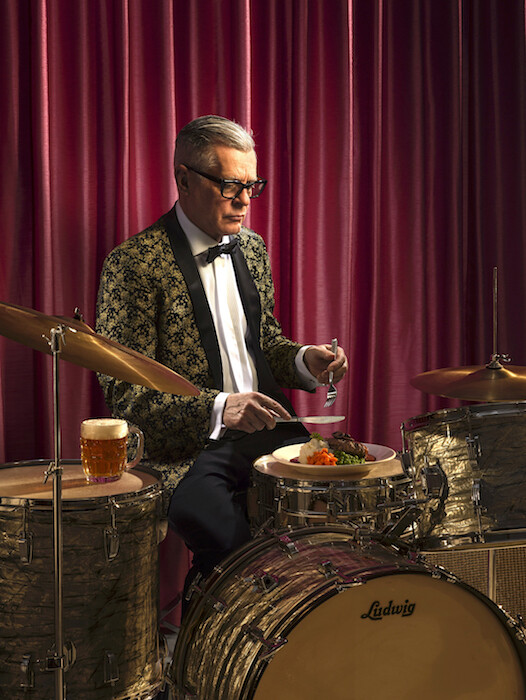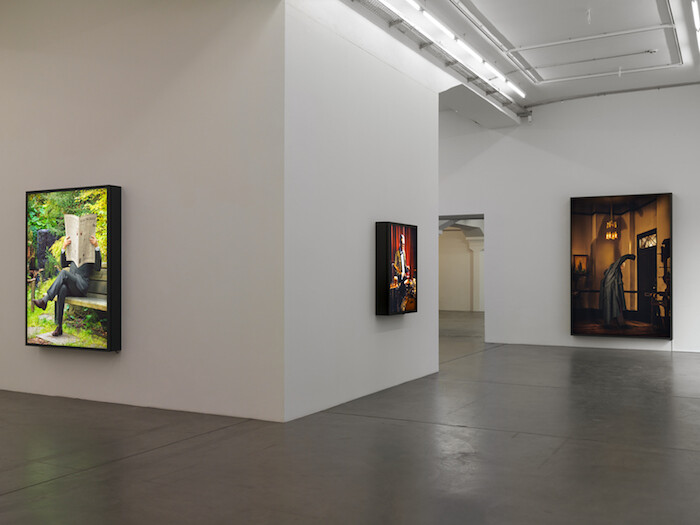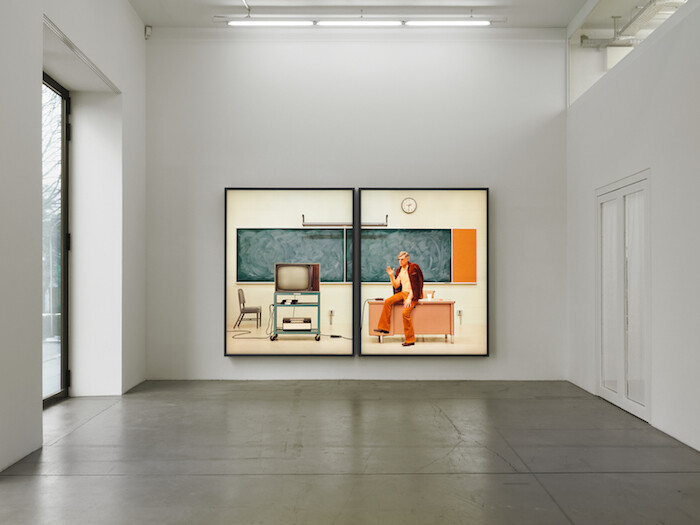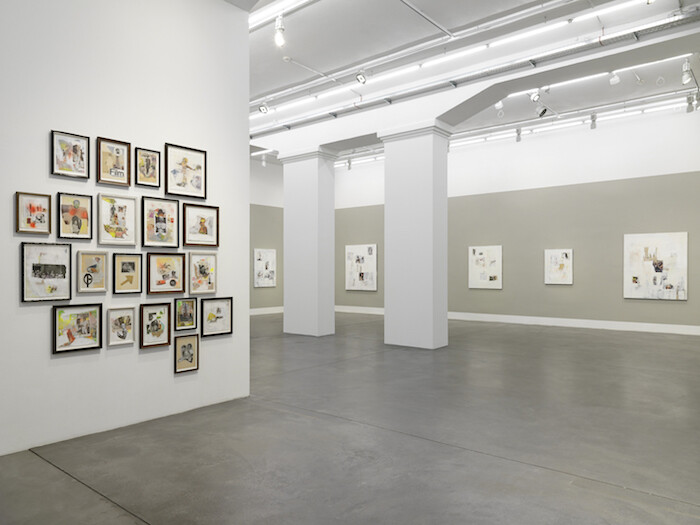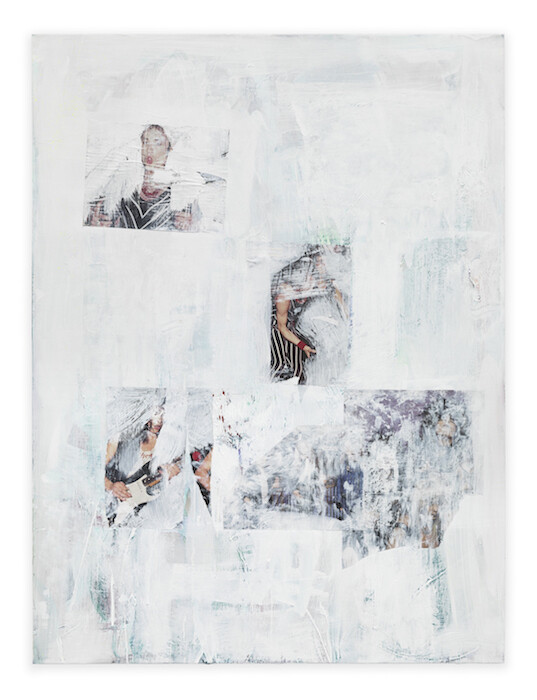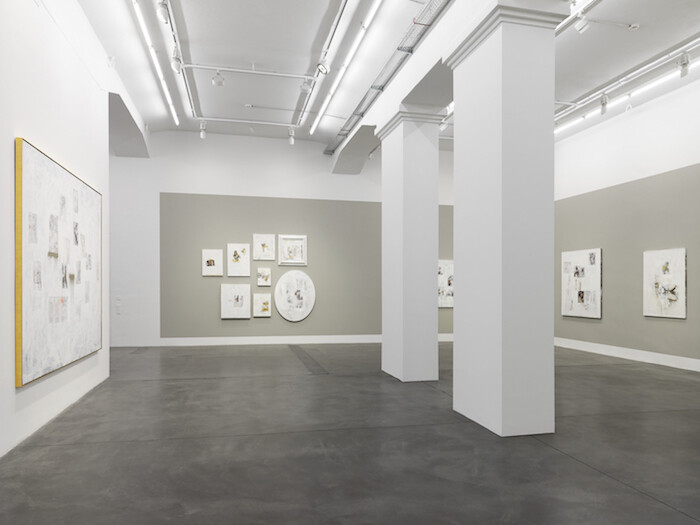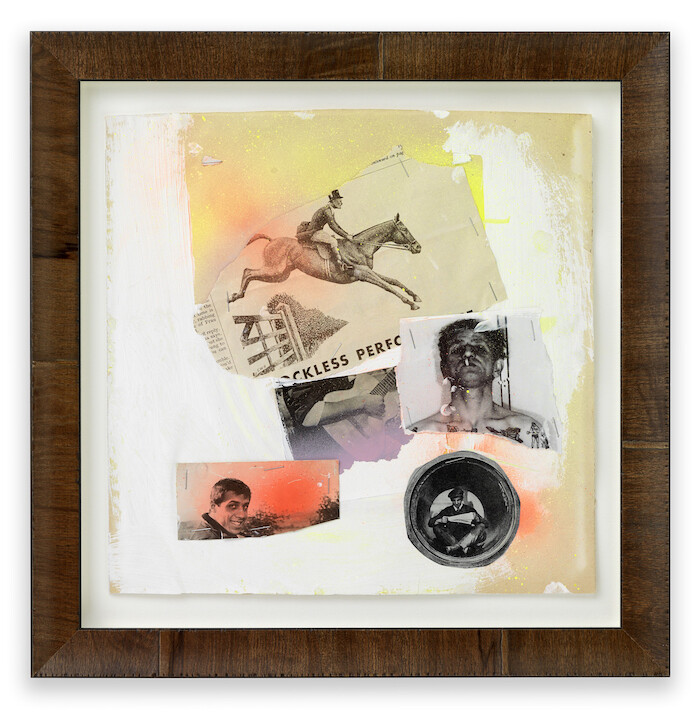Rodney Graham’s large-format light-box tableaux have been a mainstay of his oeuvre since 2006, and are consistently sophisticated and detailed. The artist’s current exhibition at Hauser & Wirth in Zurich includes seven new light-box works that do not disappoint, but, I wondered, why produce these works now?
Graham has been active as a musician and artist for several decades, playing a key protagonist in his own pieces from the 1990s onwards. His looping film works, such as Photokinetoscope (2001) or Vexation Island (1997) have long been in the contemporary canon. His light-boxes, meanwhile, show chromogenic prints charged with color sandwiched between transparent surfaces, all the better to view images stuffed with detail. The exhibition’s title image, Media Studies ’77 (2016), is a diptych more than two meters tall and nearly four wide showing Graham posing as professor perched on a bent sheet steel desk in front of a blackboard, media trolley at the ready, a cigarette in the hand with which he emphasizes his point while looking right into the middle distance. His russet cords have a slight flare, a suede jacket drapes over his shoulders, and his glasses are tinted. The setting—painted breeze block walls, the clunky television remote, plug sockets—is North American but the figure (though inspired by one of Graham’s Vancouver lectures) is modeled on the French intellectuals of 1970s cinema, a heady time for a student keen to soak up continental influences.
Antiquarian Sleeping in his Shop (2017) is a triptych five and a half meters wide featuring the shopkeeper at the center, raised as if on an altar, though snoozing on his sofa while reading cultural polymath Harry Smith’s interviews. Crowded around him, each object delicately placed, are hats, botanical models, paintings, lamps, occasional tables, frames, baskets, small totem poles, musical instruments, and a bookcase with titles ranging from Asger Jorn to Thomas De Quincy and Ian Fleming. References and echoes spill out, and span centuries and media, starting, let’s say, with the ecclesiastical composition and ending somewhere around a rabbit mask’s more recent parallels with Donnie Darko or Halloween. Graham is the consummate Renaissance man; he even made light of the idea of cultivated erudition and Renaissance music in a 2006 photograph of the same name. Other targets for his barbed wit include the figures of auteur, hermit, artist, and detective. Yet he still stitches together these immense self-portraits, which here include a jazz musician eating his dinner from a drum kit (Dinner Break (Salisbury Steak), 2017), a figure pulling on a long woollen coat in a darkened hallway (Coat Puller, 2017), and another nursing a beer alone in an artists’ bar (Artist in Artists’ Bar, 1950s, 2016). Positioning some figures, like the lecturer, in a historical context adds the potential of ping-ponging perspective: hindsight combined with nostalgia or disdain for the hopes of that time.
A lot more could be said here about re-enactment and disguise, but Graham is always in these images and self-portraiture is a familiar, yet nonetheless exceptional form. Selfies are all the rage, but artists employing self-portraiture tend to do it equivocally: think of Gillian Wearing’s masks or Cindy Sherman’s prostheses; Chantal Joffe is an outlier. It takes some nerve to look oneself in the eye and hold that gaze and Graham rarely does; he (or his figures) tends to look away, to be unconscious (literally or metaphorically) of viewers. The artist who pictures him- or herself is open to accusations of vanity or arrogance, the charge that self-scrutiny becomes indulgent introspection. But if self-portraiture is a tool for self-analysis—one self in many different guises, in Graham’s case—then the better fathomed self might lead to a better understanding of humanity at large. If only he would look at us. Yet a large part of the appeal of these light-box portraits is that no matter how glorious or exotic the framing, we cannot see what occupies the figures so much that it traps them in their own thoughts; there is a parallel, inaccessible narrative in the character’s mind.
A series of rough untitled magazine collages, small-scale with paper and larger-scale with gesso on canvas, the latter borrowing heavily from the rock magazine Circus, the former uniting shots of Fidel Castro, the British royal family, and film stars in rough stapled and spray-painted arrangements, complete the Zurich show. These are works that operate on a completely different timescale, of making and viewing, to the light-boxe works. They attest that Graham is capable of being expressive, but do not rival his more important works in which control is key. Graham is not against contemporary commentary; his light-box Dance!!!!! (2008), Graham dancing at gunpoint in a Western saloon, was notably a response to Abu Ghraib. If such commentary is present here, it is veiled. We cannot know these figures; they are of our time, because lately we don’t recognize ourselves.
